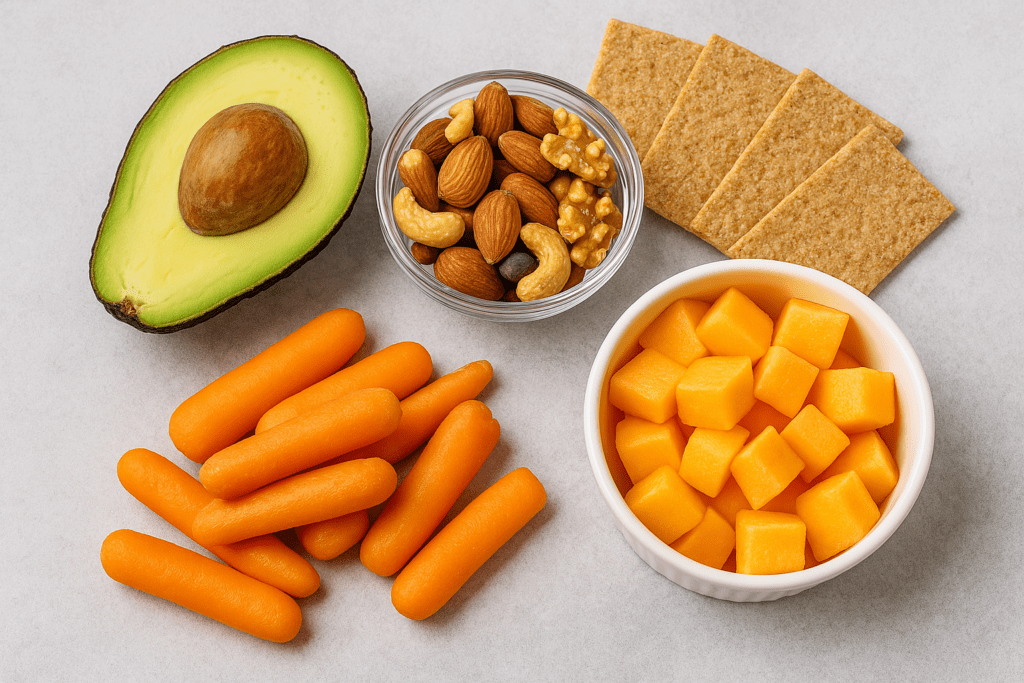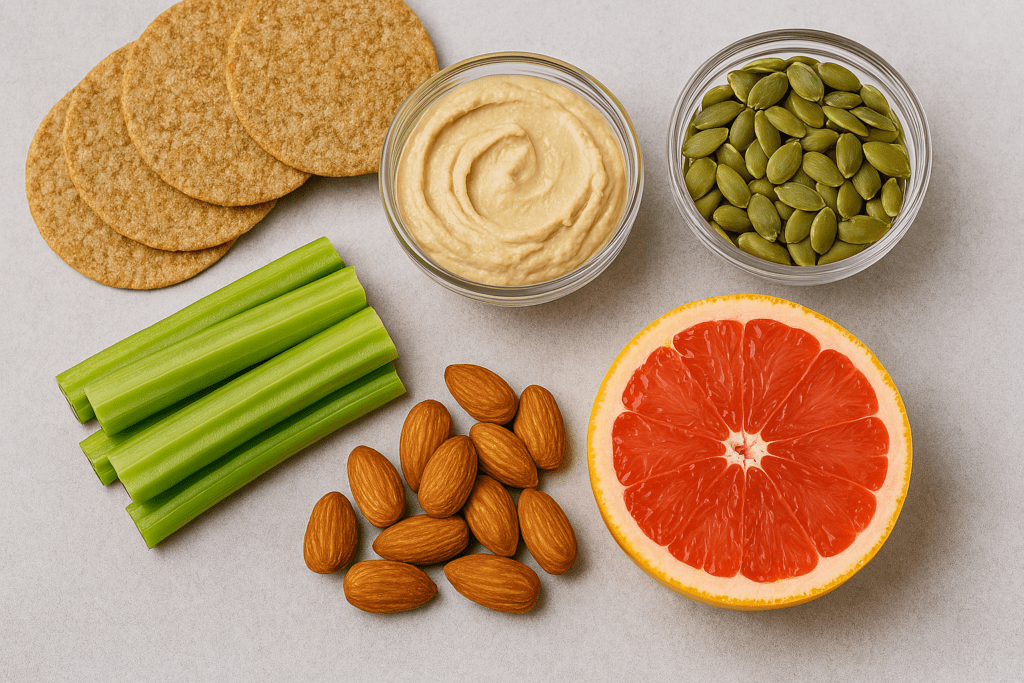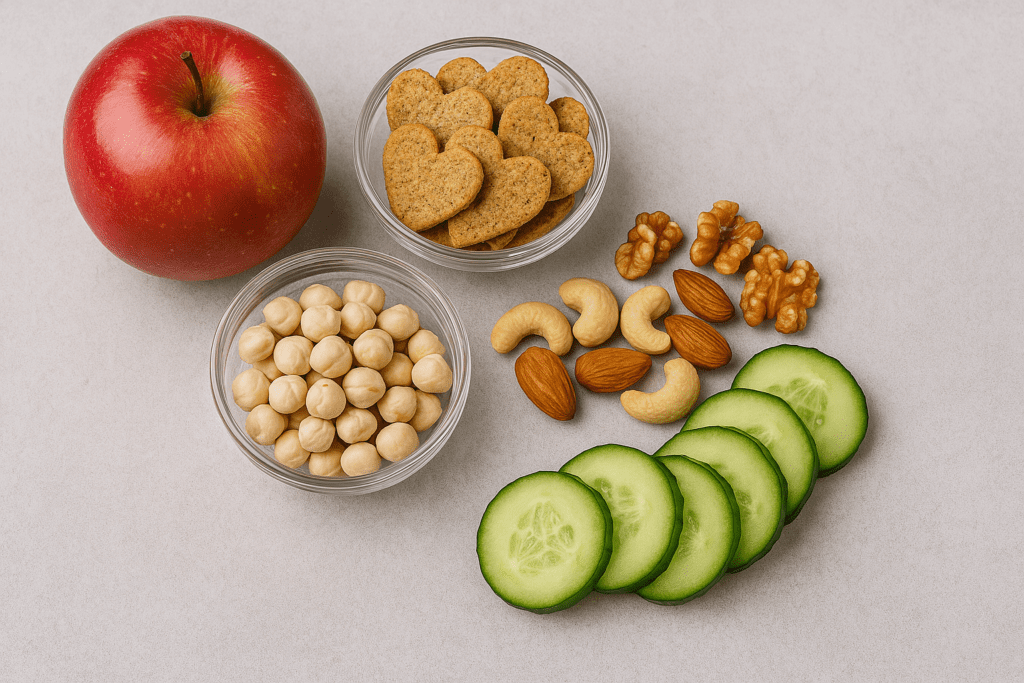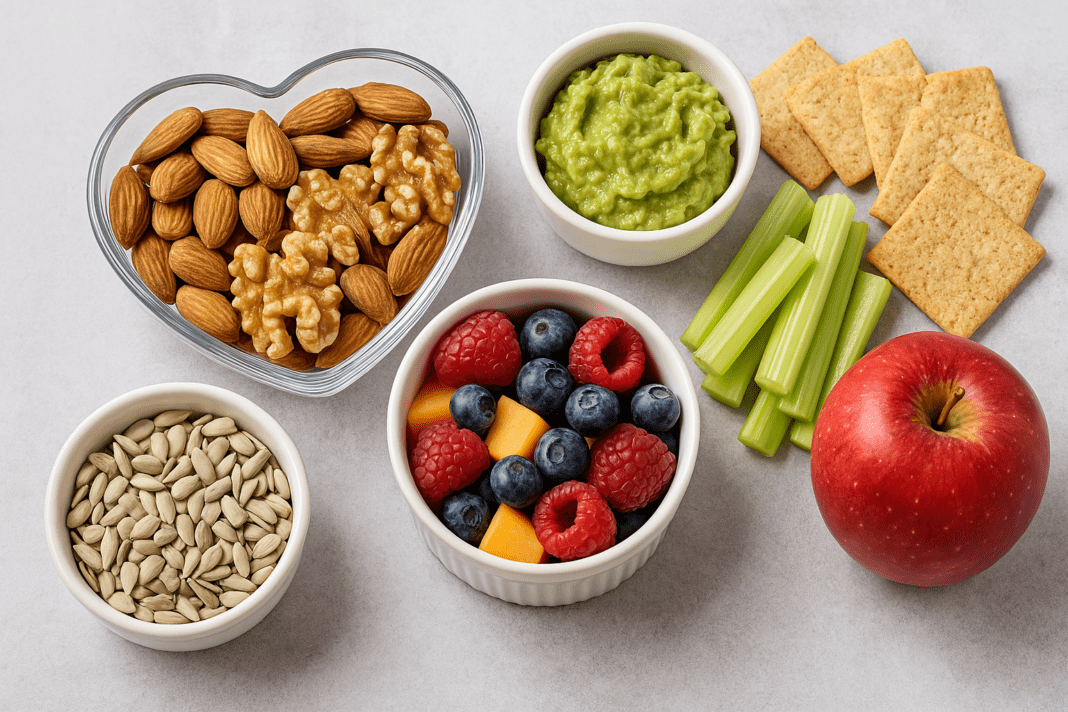Understanding the Importance of Sodium in Cardiovascular Health
In the realm of cardiovascular health, sodium plays a far more complex role than many realize. While the human body needs sodium to maintain fluid balance, support nerve function, and assist in muscle contractions, excessive intake has been strongly linked to hypertension, or high blood pressure. This condition remains one of the most significant modifiable risk factors for heart disease, stroke, and kidney damage. For this reason, most cardiologists and registered dietitians advocate for a controlled intake of sodium—particularly in populations predisposed to cardiovascular conditions.
You may also like: Top 15 Foods to Avoid with High Blood Pressure: What Not to Eat When Managing Hypertension
The average American consumes over 3,400 milligrams of sodium daily, far exceeding the 2,300 milligrams recommended by the Dietary Guidelines for Americans. For individuals with high blood pressure or certain cardiovascular diseases, even stricter limits of 1,500 milligrams may be advisable. High sodium consumption contributes to increased fluid retention, which elevates blood pressure and puts undue stress on the vascular system. Consequently, a low sodium diet becomes a cornerstone of therapeutic dietary interventions for those with or at risk for cardiovascular disorders.
One of the greatest challenges people face when switching to a low sodium eating pattern is finding satisfying and heart-healthy snacks. Snack foods, especially processed and packaged ones, are notorious for their high sodium content. However, with growing awareness and innovation in food science and dietetics, a wide range of low sodium snack ideas is now available that cater to both taste and health. Incorporating low sodium diet snacks into daily routines can have a profound impact on maintaining normal blood pressure and supporting overall cardiovascular well-being.
Why Snacking Matters on a Low Sodium Diet
Contrary to the outdated belief that snacking leads to weight gain or poor dietary habits, strategically planned snacks can play a vital role in maintaining metabolic balance and preventing overeating during meals. For individuals on a low sodium diet, snacks are not only an opportunity to curb hunger but also a way to fill nutritional gaps that might otherwise go unnoticed in restricted eating patterns.
When sodium is limited, it becomes crucial to ensure that other nutrients—such as potassium, fiber, and antioxidants—are abundant. These elements support vascular function, reduce oxidative stress, and balance electrolyte levels in the body. Carefully selected low sodium diet snacks can also stabilize blood glucose levels, minimize inflammation, and contribute to satiety, making it easier for patients to adhere to heart-healthy eating plans.
Moreover, snacking can be especially important for those with coexisting conditions such as diabetes or chronic kidney disease, where small, frequent meals are often advised. Instead of turning to ultra-processed items with hidden salt, patients and health-conscious consumers alike benefit from incorporating doctor-approved low sodium snack ideas into their daily eating patterns. These snacks not only support heart health but also contribute to long-term dietary adherence, enjoyment, and overall quality of life.

Common Pitfalls: Where Hidden Sodium Hides in Snack Foods
Navigating the world of packaged foods can be a daunting task when trying to adhere to a low sodium diet. Many foods that appear healthy—such as granola bars, deli turkey, and flavored yogurt—often contain significant amounts of sodium as a preservative or flavor enhancer. Even foods marketed as “heart-healthy” or “low fat” may be hiding hundreds of milligrams of sodium per serving.
Canned vegetables, soups, snack crackers, flavored nuts, and ready-to-eat cereals are among the most common culprits. Sodium is not just added as table salt but can also come from sodium-containing compounds like monosodium glutamate (MSG), sodium bicarbonate, and sodium nitrate. These additives can significantly raise a person’s daily sodium intake without their awareness, especially when portion sizes are underestimated.
Label reading is essential in avoiding these pitfalls. Look for products that are labeled “low sodium” (meaning 140 mg or less per serving), “very low sodium” (35 mg or less), or “no salt added.” However, even these claims can be misleading if multiple servings are consumed. Education around interpreting nutrition facts panels is an important step in identifying appropriate low sodium snack ideas that genuinely align with cardiovascular goals.
Doctor-Approved Low Sodium Snack Ideas That Support Heart Health
Crafting a list of satisfying, convenient, and nutritionally sound low sodium snacks requires both medical insight and culinary creativity. While taste is important, the primary objective of these snacks is to align with clinical dietary goals, especially for those managing hypertension, congestive heart failure, or other cardiovascular concerns.
Fresh fruits and vegetables remain foundational elements of any heart-healthy snacking plan. Sliced cucumbers with lemon juice, cherry tomatoes with a sprinkle of oregano, or apple slices with unsalted almond butter offer both flavor and nutrition without excess sodium. Raw or steamed vegetables paired with homemade hummus—made without added salt—can provide fiber, protein, and satisfaction.
Low sodium diet snacks can also include plain air-popped popcorn seasoned with garlic powder and nutritional yeast, or whole-grain rice cakes topped with avocado slices and a dash of crushed red pepper. These snacks are not only low in sodium but also provide essential nutrients like magnesium and potassium, which are known to help lower blood pressure.
Another excellent option includes unsalted nuts and seeds, such as almonds, walnuts, sunflower seeds, or pumpkin seeds. While high in calories, these foods contain heart-healthy fats and phytosterols, which have been shown to improve cholesterol levels and reduce cardiovascular risk. For variety, individuals can experiment with homemade trail mix made with dried fruit (without added sugar), raw seeds, and a handful of unsalted nuts.
Incorporating protein is also essential. Low sodium cottage cheese, Greek yogurt (unflavored), or hard-boiled eggs seasoned with herbs rather than salt can make for satisfying, nutrient-dense snacks. Edamame—steamed and served plain or with a touch of lemon—is another powerhouse snack rich in fiber and plant-based protein.
How to Build a Sustainable Low Sodium Snacking Routine
Consistency is key in dietary behavior change, especially for those managing chronic health conditions. Developing a sustainable snacking routine involves more than just choosing the right foods—it also includes meal planning, preparation, and mindfulness around eating behaviors. Patients are more likely to succeed when they feel empowered, supported, and equipped with strategies that fit into their lifestyles.
One approach involves designating a portion of grocery shopping and meal prep time specifically for snacks. Preparing pre-cut vegetables, portioning out unsalted nuts, or pre-mixing overnight oats can reduce the temptation to grab high-sodium convenience foods. Using clear containers or labeled snack bags can make nutritious choices more accessible throughout the week.
Mindful eating is another important element of sustainability. This involves paying attention to hunger cues, avoiding distracted eating (such as in front of a screen), and appreciating the sensory experience of food. When individuals are more engaged with their food, they tend to eat more slowly, experience greater satisfaction, and make better choices—especially when following a low sodium diet.
Involving family members in the snacking routine can also lead to greater adherence. Children, spouses, or roommates may benefit from adopting low sodium snack ideas that support the household’s overall health. Encouraging a communal approach to meal planning and grocery shopping can make dietary changes feel less restrictive and more enjoyable.
Medical Benefits of Low Sodium Diet Snacks for Cardiovascular Health
The health benefits of consuming low sodium diet snacks extend far beyond the numbers on a nutrition label. Multiple large-scale studies have demonstrated that reducing sodium intake can significantly lower blood pressure within just a few weeks. For individuals with prehypertension or stage 1 hypertension, the effect can be as pronounced as taking a first-line blood pressure medication.
Low sodium snacking contributes to overall dietary sodium reduction, which, in turn, lowers the strain on arterial walls and decreases the risk of left ventricular hypertrophy—a condition where the heart muscle thickens in response to prolonged high blood pressure. This adaptation can ultimately lead to heart failure if left unchecked. Reducing sodium also decreases fluid retention, which can help alleviate swelling in the legs, ankles, and feet—a common symptom in patients with heart failure.
Beyond blood pressure, low sodium diet snacks often displace processed, nutrient-poor foods in the diet, making room for foods rich in antioxidants, polyphenols, and plant sterols. These compounds support endothelial function, reduce systemic inflammation, and promote vasodilation—all of which are protective against coronary artery disease.
Additionally, potassium-rich low sodium snacks—such as bananas, sweet potatoes, and yogurt—help balance the sodium-potassium ratio in the body. This ratio is crucial for maintaining healthy blood pressure and supporting kidney function, particularly in aging populations or those with comorbid conditions. Thus, incorporating low sodium snack ideas is not just a dietary choice, but a therapeutic strategy with measurable benefits for heart health.

Practical Tips for Reading Labels and Identifying Low Sodium Products
Learning to decipher food labels is a practical skill that empowers consumers to make informed dietary choices. Understanding how to evaluate sodium content can help individuals stay within their daily limits while still enjoying a variety of convenient snacks. The first step is examining the serving size and recognizing how many servings are realistically consumed. Often, a single snack-sized package may contain two or more servings, each with a seemingly modest sodium level that quickly adds up.
Look for labels that state “low sodium,” “very low sodium,” or “no salt added.” Be cautious with terms like “reduced sodium,” which only indicates that the product has 25% less sodium than the original version—it may still contain more sodium than recommended. Also, take note of the daily value percentage listed next to sodium. A general rule is to aim for snacks that contribute less than 5% of the daily value for sodium per serving.
Familiarity with sodium-related additives is also beneficial. Sodium benzoate, sodium phosphate, and sodium ascorbate are commonly used preservatives that can significantly raise total sodium intake. Choosing whole or minimally processed foods is the safest strategy for maintaining a low sodium diet.
Finally, consider utilizing mobile apps or online databases that track sodium content in packaged foods. These tools can help simplify the process of identifying low sodium snack ideas and monitoring daily intake, especially for individuals newly transitioning to heart-healthy eating habits.
Incorporating Variety and Flavor Without Added Salt
One of the misconceptions about a low sodium diet is that it inevitably leads to bland and unsatisfying food. In reality, flavor can be enhanced in numerous ways that do not rely on salt. Herbs and spices such as basil, rosemary, cumin, coriander, and paprika offer bold taste without contributing to sodium load. Acidic ingredients like lemon juice, lime zest, and vinegar can also brighten dishes and elevate snacks without salt.
Roasting vegetables with garlic and olive oil, toasting seeds for extra crunch, or adding a pinch of cinnamon to fruit-based snacks are simple ways to diversify flavors. Fermented foods like low-sodium sauerkraut or yogurt provide complex, umami notes while also supporting gut health—another important factor in cardiovascular wellness.
Involving the senses—sight, smell, texture, and taste—makes snack time more enjoyable and engaging. For example, layering crunchy raw vegetables with creamy avocado or pairing crisp apple slices with smooth nut butter can create sensory satisfaction. These textural contrasts can help distract from the absence of salt and increase the enjoyment of low sodium diet snacks.
By embracing culinary creativity, individuals can create a wide variety of heart-healthy, low sodium snack ideas that are both enjoyable and aligned with medical nutrition therapy. This shift in perspective—from restriction to opportunity—can dramatically improve adherence and satisfaction over time.
Frequently Asked Questions: Low Sodium Snacking for Cardiovascular Health
1. How can I make low sodium snack ideas more appealing for kids and picky eaters?
Getting kids and picky eaters on board with low sodium diet snacks requires creativity, color, and familiar textures. One effective strategy is to focus on visual presentation—use bento boxes or muffin trays to make snack time feel like an interactive experience. For example, create a DIY “snack palette” with sliced strawberries, cucumber coins, unsalted popcorn, and hummus for dipping. Flavor can be enhanced with herbs like basil or a drizzle of honey on apple slices instead of resorting to salty toppings. When children feel empowered to mix and match their own low sodium snack ideas, they’re more likely to develop a long-term preference for heart-healthy options.
2. Are there any emerging food technologies that support the development of better low sodium diet snacks?
Yes, the food industry is actively exploring new technologies to enhance flavor without increasing sodium content. One exciting innovation is the use of microencapsulated herbs and spices, which deliver intense bursts of flavor that linger on the palate. Additionally, food scientists are investigating plant-based sodium alternatives derived from seaweed and mushroom extracts, which provide an umami-rich taste while reducing the need for salt. Fermentation techniques are also being refined to produce savory low sodium snack ideas that mimic traditional favorites like cheese or jerky. As these technologies become more mainstream, consumers will have access to more sophisticated low sodium diet snacks that don’t compromise on taste.
3. Can low sodium snack ideas still be satisfying for people who crave salty, crunchy textures?
Absolutely. The key lies in reprogramming the palate while replicating the desired texture and crunch. Roasted chickpeas, baked kale chips, and toasted pumpkin seeds can all deliver that crave-worthy crispness without excess sodium. Seasoning them with paprika, garlic powder, or even a splash of vinegar before baking helps stimulate the taste buds in ways that mimic salt. Over time, the brain begins to associate these healthier low sodium diet snacks with satisfaction, making it easier to break the addiction to traditional salty chips or crackers. With consistency, cravings can shift significantly.
4. How do low sodium diet snacks impact long-term blood pressure control compared to meals?
While meals play a primary role in sodium intake, snacks often become the hidden contributors to excessive salt consumption—especially when they’re processed and eaten mindlessly. By replacing traditional snacks with intentional low sodium snack ideas, individuals can reduce sodium intake during off-meal hours and maintain more stable blood pressure throughout the day. This approach also prevents sodium “spikes” that can cause fluid retention or vascular stress in salt-sensitive individuals. Research shows that consistent, small changes in sodium intake—even just between meals—can cumulatively lead to lower average systolic and diastolic pressure over time.
5. Are there any psychological benefits to consistently choosing low sodium diet snacks?
Yes, there’s growing evidence that dietary changes aligned with health goals can enhance self-efficacy and mood. Choosing low sodium snack ideas reinforces a sense of control and discipline, which can improve psychological well-being, especially in patients managing chronic illnesses. Additionally, nutrient-rich low sodium diet snacks, such as those containing magnesium and B vitamins, support neurotransmitter balance and may reduce anxiety or irritability. Over time, individuals often report greater satisfaction with their eating habits and reduced guilt, especially when they learn to enjoy food without relying on excessive salt for flavor.
6. Can athletes or highly active individuals benefit from low sodium snack ideas, or do they need more salt?
While athletes may require higher sodium intake due to electrolyte loss through sweat, the need varies based on the intensity, duration, and environmental conditions of their training. That said, many recreational athletes overestimate their sodium needs. Strategic use of low sodium diet snacks—like fruit smoothies with potassium-rich bananas or unsalted trail mix—can still support performance and recovery. These snacks help replenish energy stores and prevent dehydration without pushing sodium levels too high. For high-performance athletes, individualized plans developed with a sports dietitian can incorporate both low and moderate sodium options depending on exertion levels.
7. What are some culturally diverse low sodium snack ideas that are both authentic and heart-healthy?
Exploring culturally inspired low sodium diet snacks can add variety and richness to a heart-healthy routine. For example, unsalted edamame with lemon and sesame oil makes a great Japanese-inspired snack. In Mediterranean cuisine, roasted eggplant dip (baba ghanoush) paired with raw vegetables is a flavorful and low sodium option. Latin American cuisine offers ripe mango with chili and lime as a tangy-sweet snack that doesn’t rely on salt. These global inspirations not only satisfy cravings but also expand the palate and cultural appreciation for naturally low sodium flavors.
8. How can someone transition from processed snack foods to low sodium diet snacks without feeling deprived?
Gradual substitution is one of the most effective strategies for sustaining change. Instead of eliminating all salty snacks at once, begin by mixing them with low sodium alternatives—like combining salted and unsalted nuts or swapping out one daily snack for a healthier option. Over time, increase the proportion of low sodium snack ideas while decreasing reliance on processed items. Additionally, educating the palate through herbs, citrus, and vinegar can train the brain to seek out complex flavors over sheer saltiness. Eventually, many people find processed snacks taste overly salty once they’ve acclimated to a lower-sodium lifestyle.
9. What role do low sodium diet snacks play in reducing the risk of stroke?
Frequent spikes in blood pressure due to excess sodium are a known risk factor for stroke, particularly hemorrhagic types. Incorporating low sodium snack ideas into a daily eating pattern helps maintain a stable blood pressure profile, which significantly lowers stroke risk over time. Furthermore, many low sodium diet snacks are rich in potassium, fiber, and antioxidants—nutrients shown to protect blood vessels and reduce inflammation, both of which are crucial for stroke prevention. When snack habits are tailored to support vascular health, they become a powerful preventive tool rather than just a dietary afterthought.
10. Are there potential downsides to adopting low sodium snack ideas too aggressively or without guidance?
While reducing sodium is generally beneficial for most individuals, drastically cutting sodium without proper nutritional planning can have unintended effects. Sodium is still an essential electrolyte, and overly restrictive intake may lead to headaches, fatigue, or even hyponatremia in rare cases—especially in older adults or those with kidney issues. Therefore, it’s important to adopt low sodium diet snacks as part of a balanced approach that still includes adequate hydration and essential minerals. Working with a dietitian ensures that low sodium snack ideas are implemented thoughtfully, avoiding extremes while still achieving cardiovascular benefits.

Final Thoughts: Embracing Low Sodium Snacking for a Healthier Heart
In the pursuit of better cardiovascular health, every dietary choice matters—including the snacks we enjoy between meals. Embracing low sodium snack ideas not only supports blood pressure control but also encourages a deeper awareness of food quality, nutrient density, and long-term wellness. Far from being restrictive, a low sodium diet can be flavorful, satisfying, and empowering when approached with creativity and intention.
Low sodium diet snacks are more than just small bites—they are building blocks in a larger strategy to protect the heart, reduce disease risk, and enhance quality of life. By incorporating doctor-approved snack options, reading labels mindfully, and choosing foods that nourish rather than harm, individuals can make meaningful progress toward their health goals.
For those navigating cardiovascular conditions, small dietary adjustments like choosing low sodium snacks can yield significant benefits over time. It is a reminder that in medicine, as in life, the little things often make the biggest difference. Whether you’re preparing snacks at home, shopping for better options, or simply becoming more mindful of what you eat, every step you take toward a low sodium lifestyle brings you closer to a stronger, healthier heart.
heart-healthy snacks, sodium and blood pressure, healthy snack options, snacks for hypertension, DASH diet snacks, cardiovascular nutrition, salt-free snacking, healthy eating for heart disease, nutrient-rich snacks, potassium-rich foods, blood pressure friendly foods, heart disease prevention diet, low salt snack alternatives, diet for high blood pressure, healthy snacking habits, reducing sodium intake, flavorful salt-free snacks, unsalted snack choices, healthy heart diet tips, doctor recommended snacks
Further Reading:
Heart-Healthy Snacks: 6 Low-Sodium Options That You Must Try
Heart-healthy snacks: Ideas and recipes
Heart Failure and a Low-Sodium Diet: What to Know
Disclaimer
The information contained in this article is provided for general informational purposes only and is not intended to serve as medical, legal, or professional advice. While MedNewsPedia strives to present accurate, up-to-date, and reliable content, no warranty or guarantee, expressed or implied, is made regarding the completeness, accuracy, or adequacy of the information provided. Readers are strongly advised to seek the guidance of a qualified healthcare provider or other relevant professionals before acting on any information contained in this article. MedNewsPedia, its authors, editors, and contributors expressly disclaim any liability for any damages, losses, or consequences arising directly or indirectly from the use, interpretation, or reliance on any information presented herein. The views and opinions expressed in this article are those of the author(s) and do not necessarily reflect the official policies or positions of MedNewsPedia.


